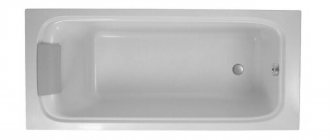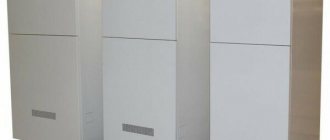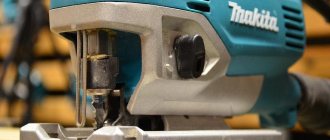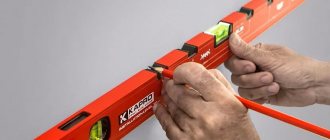Refusal to use centralized heating and water supply lines, the creation of autonomous heating systems and hot water supply at home is becoming commonplace.
This is convenient for owners of private houses or apartments; it allows them to independently make decisions about the beginning and end of the heating season or home heating modes.
Retail chains offer a wide range of gas boilers, on the basis of which the most efficient and economical heating systems are created.
European companies are considered confident leaders in the production of heating equipment, but their colleagues from Southeast Asia have achieved considerable success.
Let's consider the brightest representatives of heating equipment from South Korea - Arderia gas boilers.
Main types
The Arderia brand is owned by the South Korean company Daesung . The products of this company are widely known in the world and are in high demand. The main feature of the company is its approach to the production of heating equipment.
Most work operations are performed by automated lines, which eliminates miscalculations or negligence. The Arderia brand was created to place gas boilers on the Russian market, which were produced in the following types:
By installation type:
- wall- mounted Designed for hanging installation indoors (usually in kitchens).
Floor-standing models are not produced, as they require a separate room and are in less demand.
By feature set:
- single-circuit . Designed only to supply the heating system with hot coolant at a given temperature;
- double-circuit . The units are prepared for simultaneous heating of the coolant and supply of hot water;
The following types of heat exchanger are available::
- with separate heat exchanger . These are boilers in which the primary unit consists of pure copper (99%), demonstrating high resistance to temperature changes and the absence of corrosive processes. The secondary heat exchanger is made of stainless steel, has high heat transfer capacity and shows remarkable performance;
- with bithermal (combined) heat exchanger . This is a “pipe-in-pipe” design. The coolant and water for the hot water supply line simultaneously pass through it without mixing with each other. This design allows you to significantly increase and stabilize the hot water supply at home, but requires taking all possible measures to protect against scale. The complex cross-section of the heat exchanger pipe is very difficult to clean, and replacing a defective unit is too expensive and is not carried out everywhere.
NOTE!
The design of the boilers meets modern requirements for the functionality and efficiency of heating technology. The units have all the necessary certificates and can be used in residential and public premises.
Expert's conclusion
When stopping the Ariston boiler, you do not need to immediately call a technician and waste precious time. Just look at the code displayed on the display. Repair statistics show that in 85% of cases the user can solve the problem on his own. But you shouldn’t resort to the help of “all-knowing and experienced” people. Some Ariston models have significant design differences, which are taken into account during the repair process. The main advisor is the manufacturer's instructions. The document must have a section with explanations for each error code.
https://mastack. ru/utilities/heating/kody-oshibok-kotlov-otopleniya-oshibki-kotlov-arderia-arderiya. html
Series and models
Arderia gas boilers are available in the following series:
Series "B"
“B” series units are manufactured in Russia, at Daesung’s own production facilities . The model range consists of dual-circuit units with a bithermic heat exchanger made of copper.
The power of the models ranges from 10 to 24 kW, which is suitable for heating rooms from 53 to 250 sq.m.
Main parameters of the models:
- modulating burner;
- ability to work with low inlet gas pressure (up to 4 bar);
- silent circulation pump with a “wet” type rotor;
- there is a self-diagnosis and flame detection system;
- availability of frost protection;
- The units have been adapted to Russian climatic and technological conditions.
Gas boilers of the “B” series are reliable and economical . Each unit undergoes a separate quality control inspection. There is multi-stage protection against operational overloads or freezing.
Series "D"
A series of gas double-circuit boilers with a power of 10-24 kW, capable of heating rooms from 53 to 250 sq.m. Equipped with two heat exchangers .
Primary (main) copper, secondary (for hot water supply) - stainless steel. Parts and materials from the best European manufacturers, as well as the company’s own developments, were used in production.
Specific features of the units:
- possibility of conversion to liquefied gas;
- the gas valve is adjusted via the control panel;
- two options for installing a chimney - separate or coaxial;
- possibility of remote control via an application on a smartphone;
- There are contacts for connecting a room sensor.
The design of boilers in this series is practically no different from the design of the best European models . At the same time, the prices of Arderia boilers are at least two times lower than those of analogues from European countries.
This increases the demand for Korean units and increases their importance in the eyes of buyers.
ESR 13-20 kW
The power of boilers of this series is in the range of 16-18.6 kW . It includes two models - ESR 2.13 and ESR 2.20. In terms of their set of functions, they are dual-circuit units with a closed combustion chamber. Designed for heating rooms from 65 to 200 sq.m.
Manufactured in South Korea, at our own production facilities.
Capabilities of boilers of the ESR series 13-20 kW:
- it is possible to connect to gas lines with low pressure (up to 5 mbar);
- adjustable turbocharging;
- a circulation pump with a “dry rotor” was used, allowing maintenance without draining the coolant from the system;
- a control panel is used that operates at a distance of up to 40 m;
- there is a self-diagnosis system;
- built-in voltage stabilizer that corrects differences from 156 to 280 V.
Units of the ESR 13-20 kW series are adapted for operation in Russian conditions . They are equipped with frost protection
ESR 25-35 kW
This model line includes the ESR 2.25, ESR 2.30 and ESR 2.35 units. Power range - from 12.2 to 40.7 kW . Capable of heating areas from 122 to 407 sq.m.
Equipped with copper primary and stainless steel secondary heat exchangers, a closed combustion chamber, modulated burner.
Main settings:
- electronic flame ignition system;
- the possibility of converting gas equipment to consume liquefied gas;
- automatic maintenance of coolant and hot water heating mode;
- the presence of an ionization sensor that monitors the presence of a flame;
- adaptation of the boiler to Russian conditions.
The units demonstrate reliability, stable operation, and are easy to control and adjust . Combined with low prices, these qualities make them competitive in the market of heating devices.
Gas boiler Arderia: how to remove the pump
To remove the housing cover, perform the following steps:
- Unscrew two bolts from the bottom and top;
- unscrew the front control panel, to do this you need to unscrew 4 more screws;
- move the panel to the side, disconnect the electrical connectors (the pump will be visible, it is installed at the bottom left, it is easy to find);
- remove the pump pipe and mounting clips;
- remove the water fitting assembly;
- unscrew the fastening bolt.
After this, the pump can be removed and removed from the housing. Install the pump in the reverse order.
Specifications
Let's look at the parameters of Arderia gas boilers:
| Characteristics | Values | |||
| Arderia D10 | ESR 2.20 | ARDERIA ESR 2.35 | ||
| Boiler type | Gas heating | |||
| Fuel type | Natural or liquefied gas | Natural or liquefied gas | ||
| Installation method | Wall | |||
| Thermal power | 10.9 kW | 8.6-23.3 kW | 12.2-40.7 kW | |
| Gas consumption (max) | 1.2 m3/h | 2.73 m3/h | 4.49 m3/h | |
| Power supply | 220 V 50 Hz | |||
| Dimensions | 410x652x243 mm | 420x660x200 mm | 460x700x205 mm | |
| Weight | 26.2 kg | 24 kg | 26 kg | |
Advantages and disadvantages
Advantages:
- efficiency, a successful set of performance qualities;
- the ability to heat the coolant and supply hot water for domestic needs;
- convenient control, there is a remote control and the possibility of remote influence via the Wi-Fi module;
- the presence of a built-in voltage stabilizer capable of correcting drops of up to 150 V;
- boilers are designed for operation in difficult Russian conditions;
- the self-diagnosis system continuously monitors emerging problems and notifies the owner about them;
- there is multi-stage protection against all overloads, coolant freezing, voltage drop, etc.;
- the price of the units is significantly lower than that of European analogues of the same quality.
Flaws:
- need to connect power supply. If there is a sudden shutdown in winter frosts, there is a risk of being left without heating;
- the company emerged relatively recently and has not yet managed to create an extensive network of service centers;
- The power of the units is limited and does not allow their use in large rooms.
Judging by the relevance and high demand, the shortcomings are not critical and are quite surmountable.
CAREFULLY!
Some users note a high noise level or some time lag when supplying hot water. However, such features are typical for all models of gas boilers from European and Russian manufacturers.
Expert advice
- Before you begin repairing the Ariston boiler, you need to press the “RESET” button (translated as reset, playback, zero) and restart the heating installation. Often this helps restore its functionality. As a rule, the occurrence of an error is caused by voltage instability - a typical case in the private sector.
- If an Ariston boiler does not have a display and its indicator lights are blinking, it is not a fact that a malfunction has occurred. This happens when the Comfort mode is turned on. The heat generator is forced to adapt to the microclimate in the room, hence its periodic switching off/on
p, blockquote 3,0,0,0,0 —> Ariston CARES X 24 FF control panel diagram with explanations
Operating and setting instructions
The initial (basic) setting of gas boilers is carried out at the manufacturer. During installation and first start-up, it is necessary to correct the factory settings in order to combine the existing operating conditions with the needs of the mechanics and electronics of the boiler. These actions must be performed by employees of service centers or warranty workshops.
Independent intervention in the design of gas appliances is prohibited . Operating settings such as adjusting the temperature or turning off the heating for the summer are permissible and must be carried out by the user.
Operation of the units is not difficult . It is necessary to pay attention to the display readings and, if necessary (if an error code appears), call a technician. Clean the housing from dust and dirt, carry out technical inspection and other procedures in a timely manner. Before starting work, you should carefully study the instructions and follow their instructions.
The pressure in a double-circuit boiler either drops or rises, what to do?
Hi all! The author of the site Blogvp.ru, Vitaly, is in touch! I think you will agree that it is not a very fun experience to be left without heating and hot water on winter days. And this prospect came up several times in my house. I want to tell you how I struggled with this and what knowledge I acquired in this matter.
In my house, for about six years, a gas double-circuit wall-mounted boiler ARISTON CLAS 24 FF has been working to create comfort. Undoubtedly, the thing is extremely convenient; anyone who used, for example, geysers from the early nineties will understand.
But, as they say, nothing lasts forever, and therefore sooner or later, you have to deal with the refusal of technology to perform the intended work.
And although I practiced on my Ariston, so to speak, some faults will be common to any boiler. So, let's get down to business.
The pressure in the boiler slowly drops, you have to periodically add water to the boiler
First, let's look at cases where the pressure drops all the time. This is a fairly common problem - it manifests itself in the fact that the pressure in the heating system slowly decreases and when it drops below normal, some boiler models turn off.
There are two reasons why this can happen.
Leak in the heating system
An elementary coolant leak from pipes or leaky radiators, but most often what is used as a coolant? That's right water!
Believe me! It’s not easy to detect such a leak during the heating season, but the fact is that you won’t see a puddle on the floor, unless of course it’s a serious leak. Most often, these will be just droplets and you will not see these droplets, since they quickly evaporate from heated pipes.
As a result, slowly but surely the pressure will drop. You add water over and over again and this continues to kill the radiators. Because the oxygen released from the incoming fresh water does not benefit them.
How and where to look for a leak
You need to pay attention to radiator plugs, joints or soldering of pipes and fittings. You can often see traces of water leaks in the form of rusty or salt stains. But this depends on the composition of the water in your area.
It is not uncommon for modern radiators, aluminum or bimetallic, to also become unusable, sometimes in extremely inconspicuous places, between the ribs or from below, they begin to dig in due to metal corrosion. Not rust, of course, but various chemical processes also damage them. Radiators must be carefully inspected while searching for leaks.
It will be easier to detect various types of leaks if you turn off the heating for a while, let the radiators cool and add pressure to about 2.5 Bar. After this, you will be able to see drops or puddles on the floor. Carefully inspect the floors under the radiators, pipe connections, and soldering areas.
The boiler can also be the cause of the leak. For example, the primary heat exchanger itself or its connections are leaking. But as long as these are small droplets, you will not notice anything; they evaporate during operation of the boiler. As soon as it starts to leak more actively, you will notice “drops” from the boiler.
Regardless of whether the burner is on or not, the leaking feed taps or emergency relief valve will be clearly visible.
So, the first reason for the pressure drop in the system is a coolant leak.
Expansion tank
Another reason is the expansion tank. This is a sealed container divided in half by a membrane, one half of the tank is filled with inert gas or just air, the other is filled with coolant (read water).
Expansion tank
It is designed to compensate for the pressure created during the expansion of the heated coolant.
When heated, the water in the system expands and fills its half of the tank, compressing the gas; when cooled, the coolant is again pushed into the heating system.
This is how temperature expansion in the heating system is compensated.
But sometimes the tank itself may malfunction.
Expansion tank malfunctions
For example, the tank body has lost its tightness and air is escaping from it. This does not happen often, and usually results in a fairly rapid decrease in pressure in the tank, from almost instantaneously to several days.
Also pay attention to the spool so that it does not poison the air either.
The spool (as in a car or bicycle) is located in the upper part of the tank; air is pumped through it, thereby creating the necessary pressure in the expander tank.
Another bad problem with the expander is the rupture of the membrane inside the tank, although it is not so delicate, and you need to “try” hard to break it. But if this happens, then identifying such a problem is not difficult.
In this case, the coolant enters from the heating system into that part of the tank that should be filled with air, and if pressing the spool needle throws water out of the tank, then water has penetrated where it should not be - the tank needs to be replaced.
But most often the pressure in the tank decreases very slowly, due to minor natural leaks. This decline occurs over many months or several years.
At the same time, the pressure in the expander chamber gradually decreases; naturally, it will also decrease in the readings of the boiler pressure gauge.
The behavior of the boiler very much depends on the level of this same pressure in the expander and can manifest itself in different ways. Under the next heading you will find a description of these problems.
The pressure rises and falls - the boiler does not operate stably
From all of the above, it is clear that air comes out from the part of the expansion tank in which it should be or does not have sufficient pressure. And here the pandemonium begins with changes in the operation of the boiler. All this can manifest itself in different ways and depends on the pressure in the air chamber of the Republic of Belarus.
For convenience, we will divide these manifestations into different stages.
FIRST STAGE - The pressure in the boiler drops slowly, about once a week you have to top up the boiler, while there are no obvious leaks in the expander, and there are no obvious leaks in the heating system itself.
SECOND STAGE - On the boiler pressure gauge, the pressure is constantly “walking” In heating mode it rises above 3 Bar, until the relief valve is activated; in hot water mode, on the contrary, it drops to values less than 1 bar and then the boiler may begin to shut down, the protection is activated. (If it has a pressure sensor)
THIRD STAGE - If there is absolutely no air left in the tank, then the pressure on the pressure gauge drops to zero in a very short time, sometimes in a minute.
There is only one way out for all options! It is necessary to again create the necessary pressure in the expansion tank of your boiler, in its air part.
How to pump up a boiler expansion tank
Diagram of boiler taps Ariston Class 24
A Connection for draining water into the central heating circuit (CH)
B Connection for draining water into the hot water supply circuit (DHW)
C Connection for gas supply
D Connection for cold water supply
E Connection for supplying water from the central heating circuit
S Safety valve outlet
T Drain tap
F Filling tap
How to properly pump air into the expansion tank
We follow the specified order
- Turn off the boiler from the network.
- We turn off all the taps to the boiler, supply, return, and cold water input.
- Open the drain fitting in the boiler. (T) and drain the water completely. (Here is an article about how to drain water from the boiler) The pressure in the boiler should be zero.
- We connect the pump with a pressure gauge to the RB through the spool - the drain fitting is open.
- The pump needs to pump air into the tank until water stops flowing from the drain fitting. At this stage, the main goal is to empty the tank of water.
- We release the pumped air.
- We inflate again, monitoring the pressure with a pressure gauge. The pressure in the expander should be within 1.1-1.3 bar. (See the passport for the boiler - often indicated)
- Close the drain plug.
- We open all the taps to the boiler - everything that was closed.
- We feed the boiler through the make-up tap (F) to a pressure of approximately 1.2-1.5 bar
- Let's start the boiler.
For these purposes, you can use any pump and pressure gauge. There is a car nipple there. I used an auto compressor. True, for this I had to drag the battery home. With an electric compressor, be careful to turn it off in time and not overpump.
Before starting, it will not be superfluous to expel any air that has entered the system.
In Ariston class 24, to do this, press and hold for about 5 seconds. ESK button. The boiler will go into purge mode for 6 minutes, exit this mode on its own, or you can force it by pressing ESK again.
Basic faults
The main malfunctions of Arderia boilers should be considered:
- if the outlet hole becomes icy, the pressure sensor may be turned off and the chimney may be blown out;
- stopping or falling fan speed means the entry of foreign objects or particles into the working space of the impeller;
- the overheating sensor is triggered when the circulation stops (pump failure) or the supply valves are closed;
- the boiler does not light up. This indicates a failure of the gas equipment (valve) or a power outage to the main line.
All problems that arise are immediately detected by the self-diagnosis system . It issues a special code on the remote control, which indicates a standard situation with a malfunction of a particular sensor, component, or part. A complete list of codes is contained in the user manual, which should be kept at hand.
Among them, the most common designations are the following::
| Code | Decoding | Causes |
| A1 | Air pressure sensor malfunction | Short circuit, icing of the outlet |
| A2 | The rotation speed of the fan axis has dropped | Interference, foreign objects or debris on the impeller |
| A3 | The pressure sensor triggered before the pump was started | The sensor is clogged with dirt and needs cleaning. |
| A4 | Coolant overheat sensor | Circulation stops due to pump or three-way valve failure |
| A5 | The coolant pressure has dropped | There is little water, the system is airy, leaks have appeared |
| A6 | No ignition or chimney blocked | Gas pressure has dropped, the chimney is clogged with soot or ice |
| A7 | Gas valve short circuit | The control unit has failed |
| A8 | There is a flame on the burner, although there is no gas supply | Problems with the gas valve, control unit. Check grounding. |
| A9 | Coolant frozen | Temperature drop to -5° |
| AA | The coolant has boiled | Circulation stopped, valves closed, problems with three-way valve or pump |
| AND YOU | Thermostat failure | Breakage, poor contact |
| AE | Chimney blocking | Icing, deformation, foreign objects |
Error codes
If the slightest malfunction or problem occurs in the operation of the device, a certain error is shown on the electronic display.
To properly troubleshoot a problem, you need to know the content of all possible equipment errors.
- Error A1 - failure of the air pressure sensor. This probably occurs due to blockage or icing of the inlet.
- Error A2 - reduced fan speed, as a result of which the boiler does not heat the water well and is also noisy. The cause may be either poor contact, problems with connecting the wires, or foreign objects getting on the fan blades. This may be the cause of the noise.
- Error A3 - the circulation pump is broken, the pressure drops. This problem can occur due to dirt getting into the pressure sensor, or if it turned on before the pump.
- Error A4 - an increase in the temperature of the device, which knocks out both fuses at once. This can happen if the shut-off valves are screwed down, the heating filter is clogged and the valve is leaking, the pump is faulty, the three-way valve is not working, or the water flow sensor is damaged.
- Error A5 - coolant pressure decreases. It may occur due to a decrease in the amount of water in the system, the appearance of air, pump failure or a decrease in its speed, or wear of the pressure sensor.
- Error A6 - no ignition, the boiler does not ignite and goes out. Occurs due to blockage of the chimney, low gas pressure, inoperability of the gas valve, breakdown of the transformer, or blockage of the gas duct.
- Error A7 - the gas valve is broken, as a result of which the unit does not start. This breakdown occurs due to the relay closing, errors in the control system.
- Error A8 - flame extinction. This happens due to the presence of a residual flame when the gas valve is turned off, damage to the gas valve diaphragm, or failure of the control unit.
- Error A9 - freezing. Occurs as a result of a decrease in coolant temperature to 5 degrees Celsius.
- Error AA - boiling. It happens if the heating circuits are faulty, the filters are clogged, the circulation pump does not work, the three-way valve is damaged or worn out, or the hot water supply sensor is damaged.
- Error AB, AC - thermostat failure. Possible due to an electrical short in the thermostat or poor connection of contacts in the device itself.
- Error AE - chimney blocked. Appears due to foreign bodies entering the gas outlet or its deformation.
- Error E0 - problems with the anti-freeze mode. Occurs when the temperature drops to 1 degree Celsius. In this case, the boiler will not work until the temperature rises above this mark.
- Error E1 - failure of the ionizing sensor, lack of combustion. Occurs when the flame goes out or ignition is poor. Within an hour, the boiler itself will try to correct errors in the system. If this does not happen, then you need to contact specialists.
- Error E2 - error in the sensor responsible for air pressure. Occurs when there is reduced draft or a faulty fan. If after 15 minutes the device does not work, it is better to contact the customer service center.
- Error E3 - occurs when the thermostat overheats. This may occur due to the absence or improper circulation of coolant. It is necessary to drain the hot water, check all valves, and press MODE to unlock.
- Error E4 - failure or overheating of the temperature sensors. May occur if the pump breaks down.
There are also cases when no error is displayed on the display, but the boiler operates with complaints.
Such cases include the following.
- The fan turns on, but the burner does not light. The problem may arise due to a clogged chimney, leakage of combustion products, or breakdown of the current stabilizer.
- Change of flame color to red or yellow. Occurs due to contamination of the burner, failure of the gas valve settings.
- Hot water begins to flow after a long period of time. This is most likely not an error or breakdown - this phenomenon is associated with the gradual heating of the incoming water.
Price range
The cost of Arderia gas boilers is significantly lower than that of similar devices made in Europe.
For a Russian buyer they cost 23-36 thousand rubles . The price of the unit depends on its power and additional functions. It must be taken into account that the chimney and remote control devices, room thermostat, etc. sold separately.
IMPORTANT!
You should not skimp on warranty service. The danger of being left without heating in winter is much more serious than the costs of concluding a warranty agreement.
Arderia gas boilers appeared on the Russian market relatively recently. Most users do not yet know about them, although a considerable number of units are already in operation.
They demonstrate stable operation, efficiency, and resistance to external loads . Self-diagnosis prevents boilers from malfunctioning; the built-in voltage stabilizer corrects fluctuations in the network. The quality and low cost of Arderia boilers allow them to take their rightful place among alternative options.
Design Features
Gas appliances from Arderia are fully adapted for Russian heating systems. For stability and comfort, the following elements are provided:
- The most common cause of boiler breakdowns is power surges. The manufacturer has equipped the device with a voltage stabilizer. Their stability is maintained in a network with voltage from 150 to 285 volts.
- The reducer and gas valve maintain the burner operation in the event of a drop in gas pressure.











